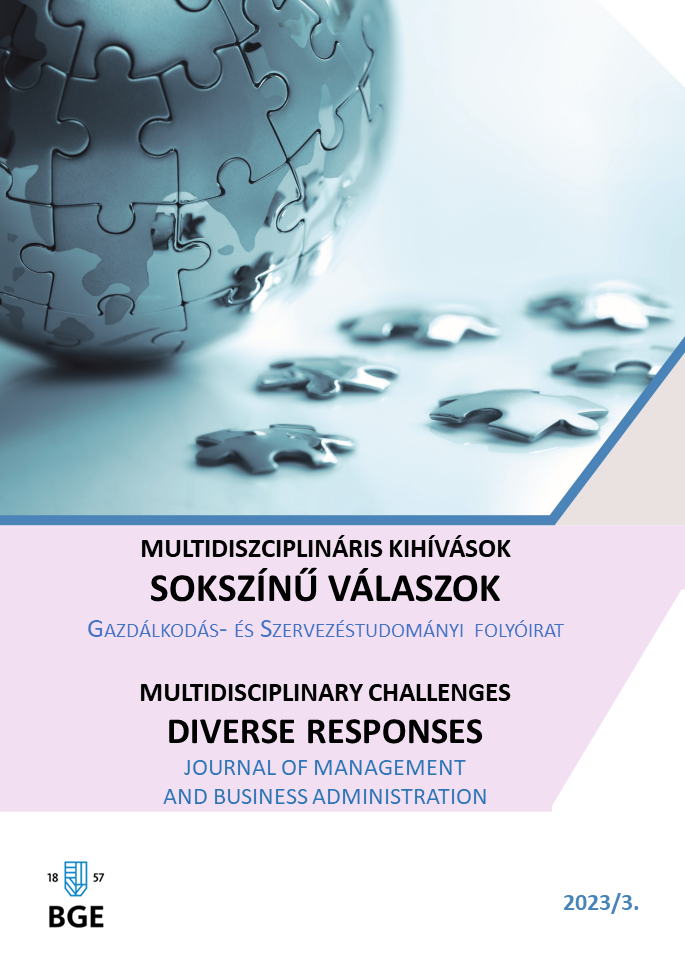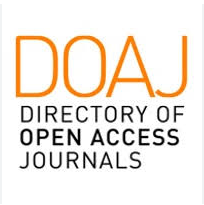A nemzetközi hallgatói mobilitás vizsgálata – Hálózatelméleti megközelítés
Absztrakt
A nemzetközi hallgatói áramlás, amely a hallgatók oktatási célú, határokon átnyúló mozgását vizsgálja, dinamikusan fejlődő kutatási terület. Kutatásunk célja, hogy azonosítsuk a hallgatói mobilitásban résztvevő fogadó és küldő országok közül a központi szereplőket különféle központi mutatószámok alapján, továbbá célunk, hogy azonosítsuk a hálózatban megjelenő országok közötti csoportosulásokat, klasztereket és azok összetételét. A kutatás arra a kérdésre keresi a választ, hogy a nemzetközi hallgatói mobilitásban résztvevő fogadó és küldő államok közül mely országoknak van központi szerepük a hálózatban. További kutatási kérdésünk: A hálózatban milyen szerkezetű és összetételű klasztereket tudunk azonosítani? Vizsgálatunk során a hálózatelemzés és a gráfelémélet módszereit alkalmazzuk. Tanulmányunk eredményei igazolták az Egyesült Államok, Egyesült Királyság, Franciaország és Németország központi szerepét, melyre már korábbi szakirodalmakban is rávilágítottak. Ez a tanulmány azonban két újszerű betekintést nyújt a nemzetközi hallgatói mobilitás témakörébe, melyre a korábbi tanulmányok még nem tértek ki. Első eredményünk, hogy a hallgatói mobilitásban résztvevő államok közötti klaszterek összetételét azonosítottuk. Második eredményünk, hogy a súlyozott befok és kifok mutatók alapján vizsgálatot végeztünk és azonosítottuk a központi országokat. Későbbi kutatások során érdemes megvizsgálni a dinamikát a regionális csomópontok szerepének a változásában. Tehát célszerű több időszak adatát összevetni és a gráfelmélet alkalmazásával egy dinamikus hálózatot létrehozni. Ennek kapcsán nem csak a regionális csomópontok, az úgynevezett „hub”-ok szerepének változására, hanem a kialakulóban lévő regionális csomópontok (emergent regional hubs/ERG) alakulására is elemzéseket tudunk végezni.
Hivatkozások
Altbach, P. G., 2004. Globalization and the university myths and realities in an unequal world. Tertiary Education and Management, 10, 3–25. https://doi.org/10.1023/B:TEAM.0000012239.55136.4b
Barnett, G.A., Lee, M., Jiang, K. & Park, H., 2015. The flow of international students from a macro per-spective: A network analysis. Compare: A Journal of Comparative and International Education, 46(4), 533–559. https://doi.org/10.1080/03057925.2015.1015965
Bastian, M., Heymann, S. & Jacomy, M., 2009. Gephi: an open source software for exploring and manipulating networks. https://doi.org/10.1609/icwsm.v3i1.13937
Blondel, V., Guillaume, J.L., Lambiotte, R. & Mech, E., 2008. Fast unfolding of communities in large networks. Journal of Statistical Mechanics: Theory and Experiment, 2008(10), P10008, 12 pp. https://doi.org/10.1088/1742-5468/2008/10/P10008
Bracht, O., Engel, C., Janson, K., Over, A., Schomburg, H. & Teichler, U., 2006. The professional value of Erasmus mobility. International Centre of Higher Education Research, University of Kassel, INCHER: Kassel. Germany: Final Report, International Centre for Higher Education Research, http://ec.europa.eu/education/programmes/socrates/ERASMUS/evalcareer.pdf, https://www2.uned.es/ciencias/erasmus-fisica/documentos/InformeImpacto_MovilidadErasmus.pdf
Byram, M. & Dervin, F., 2009. Students, staff and academic mobility in higher education. Cambridge Scholars Publishing, Cambridge. https://core.ac.uk/download/pdf/11040421.pdf
Cantwell, B., Marginson, S. & Smolentseva, A., 2018. High participation systems of higher education. Oxford University Press: 496. https://doi.org/10.1093/oso/9780198828877.003.0001
Castells, M., 2000. Materials for an exploratory theory of the network society. The British Journal of Sociology. 51, 5–24. https://doi.org/10.1111/j.1468-4446.2000.00005.x
Chen, T.M. & Barnett, G.A., 2000. Research on international student flows from a macro perspective: a network analysis of 1985, 1989 and 1995. Higher Education, 39(4), 435–453. https://doi.org/10.1023/A:1003961327009
Choudaha, R., 2012. The rise of 'glocal' students and transnational education. Support the Guardian. https://www.theguardian.com/higher-education-network/blog/2012/jun/21/opportunities-in-transnational-education
Choudaha, R., 2017. Three waves of international student mobility (1999–2020). Studies in Higher Education, 42(5), 825–832. https://doi.org/10.1080/03075079.2017.1293872
De Wit, H., 2011. Student Mobility between Europe and the rest of the world: trends, issues and challenges [PowerPoint slides]. Future of Higher Education – Bologna Process Researchers Conference. Bukarest, 17-19. October 2011. http://fohe-bprc.forhe.ro/old/2011/templates/pdf/Mobility/5_FOHE-BPRC%20Bucharest%202011%20Hans%20de%20Wit.pdf
Fernex, A., de Vries, E., & Lima, L., 2016. Articulating perspectives on international and social mobility in higher education. European Journal of Higher Education, 7 (1), 3-14. https://doi.org/10.1080/21568235.2017.1265740
Glass, C.R. & Cruz, N.I., 2023. Moving towards multipolarity: shifts in the core-periphery structure of international student mobility and world rankings (2000–2019). Higher Education, 85, 415-435. https://doi.org/10.1007/s10734-022-00841-9
Honvári, J., 2012. Migrációs potenciál és a potenciális tanulási migráció. Hazai hallgatók külföldi tanulási szándékai. Tér és Társadalom, 26 (3), 93-113. https://doi.org/10.17649/TET.26.3.2058.
Hou, C. & Du, D., 2020. The changing patterns of international student mobility: a network perspective, Journal of Ethnic and Migration Studies, 48(1), 248–272. https://doi.org/10.1080/1369183X.2020.1797476
Janik, H. & Naárné Tóth, Zs., 2021a. A Stipendium Hungaricum program szerepe a magyar agrár-felsőoktatás nemzetköziesítésében=The Role of the Stipendium Hungaricum Program in the Internationalisation of Hungarian Agricultural Higher Education. Külügyi Szemle, 20 (4). 184-202. https://doi.org/10.47707/Kulugyi_Szemle.2021.4.8
Janik, H. & Naárné Tóth, Zs., 2021b. Macroeconomic indicators and student mobility: a case study of the African countries most actively involved in FAO student mobility, Economic Annals XXI. Vol. 190 (5-6(2)), 75–85. https://doi.org/10.21003/ea.V190-07
King, R., & Raghuram, P., 2013. International student migration: Mapping the field and new research agendas. Population, Space, and Place, 19(2), 127–137. https://doi.org/10.1002/psp.1746
King, R. & Ruiz-Gelices, E., 2003. International student migration and the European ‘year abroad’: Effects on European identity and subsequent migration behaviour. International Journal of Population Geography, 3, 229-252. https://doi.org/10.1002/ijpg.280
Kolnhofer-Derecskei, A., 2022. How did the COVID-19 restrictions impact higher education in Victoria? Multidiszciplináris kihívások, sokszínű válaszok - Gazdálkodás- és Szervezéstudományi folyóirat 50-72. https://doi.org/10.33565/MKSV.2022.01.03
Kondakci, Y., Bedenlier, S., & Zawacki-Richter, O., 2018. Social network analysis of international student mobility: Uncovering the rise of regional hubs. Higher Education, 75(3), 517-535. https://doi.org/10.1007/s10734-017-0154-9
Kovács, V. I. & Tarrósy, I., 2017. Internationalisation of higher education in a global world In: Egetenmeyer, R., Guimarães, P., Németh, B. (Eds.): Joint Modules and Internationalisation in Higher Education. Reflections on the Joint Module Comparative Studies in Adult Education and Lifelong Learning. Peter Lang International Academic Publishers, 39-52. https://library.oapen.org/handle/20.500.12657/27245
Lakner, Z., Kiss, A., Merlet, I., Oláh, J., Máté, D., Grabara, J. & Popp, J., 2018. Building Coalitions for a Diversified and Sustainable Tourism: Two Case Studies from Hungary. Sustainability, 10, P1090. https://doi.org/10.3390/su10041090
Larsen, M.A., 2016. Internationalization of Higher Education: An Analysis through Spatial, Network, and Mobilities Theories; Palgrave Macmillan: New York, USA. 196 pp.
Madleňák, R., D’Alessandro, S.P., Marengo, A., Pange, J. & Neszmélyi, G.I., 2021. Building on Strategic eLearning Initiatives of Hybrid Graduate Education a Case Study Approach: MHEI-ME Erasmus+ Project. Sustainability 13, 7675–7675. https://doi.org/10.3390/su13147675
Muchiri, M. K., Erdei-Gally, S., Fekete-Farkas, M. & Lakner, Z., 2022. Bibliometric Analysis of Green Finance and Climate Change in Post-Paris Agreement Era. Journal of Risk and Financial Management, 15(12), 561. https://doi.org/10.3390/jrfm15120561
OECD, 2015. Education at glance 2015: OECD indicators. OECD Publishing. https://doi.org/10.1787/eag-2015-en
Popp, J., Kovács, S., Oláh, J., Divéki, Z. & Balázs, E., 2021. Bioeconomy: Biomass and biomass-based energy supply and demand. New Biotechnology, 60, 76-84. https://doi.org/10.1016/j.nbt.2020.10.004
Quijano, A., 2007. Coloniality and modernity/rationality. Cultural Studies, 21(2-3), 168–178. https://doi.org/10.1080/09502380601164353
Richters, E. & Teichler, U., 2006. Student mobility data: Current methodological issues and future prospects. In Kelo M., Teichler U., Wächter B. (Eds.), EURODATA: Student Mobility in European Higher Education, pp. 78-95. Bonn: Lemmens Verlag & Mediengesellschaft.
Sassen, S., 1996. Losing control? Sovereignty in an age of globalization. University seminars/Leonard Hastings Schnoff memorial lectures. Columbia University Press. NY, US.
Sin, C., Tavares, O., Aguiar, J. & Amaral, A., 2022. More students and more diverse: new trends in international mobility to Portugal. Tertiary Education and Management, 28, 135-153. https://doi.org/10.1007/s11233-022-09090-y
Teichler, U., 2003. Mutual recognition and credit transfer in Europe: Experiences and problems. Journal of Studies in International Education. 7(4), 312-341. https://doi.org/10.1177/10283153032571
UNESCO 2020. Global flow of tertiary-level students. UNESCO Institute for Statistics, http://uis.unesco.org/en/
Vinogradov, Sz., 2020. A nemzeti versenyképesség puha tényezői, a társadalmi versenyképesség, In: Csath, M. (Eds.): Versenyképesség: új elméleti és módszertani közelítések, Dialóg Campus Kiadó, 109-138. http://hdl.handle.net/20.500.12944/16023
Wallerstein, I., 2004. World-systems Analysis. Duke University Press. P128. https://doi.org/10.2307/j.ctv11smzx1
Wasserman, S. & Faust, K., 1994. Social network analysis: Methods and applications. Cambridge University Press. https://doi.org/10.1017/CBO9780511815478
Waters, J.L., 2012. Geographies of international education: Mobilities and the reproduction of social (dis)advantage. Geography Compass, 6(3), 123–136. https://doi.org/10.1111/J.1749-8198.2011.00473.X
Whatley, M. & Castiello-Gutiérrez, S., 2021. Balancing finances, politics, and public health: International student enrollment and reopening plans at US higher education institutions amid the COVID-19 pandemic. Higher Education. https://doi.org/10.1007/s10734-021-00768-7
Wilkins, S., Balakrishnan, M.S. & Huisman, J., 2012. Student choice in higher education: Motivations for choosing to study at an international branch campus, Journal of Studies in International Education, 16(5), 413-433. https://doi.org/10.1177/1028315311429002
Wu, D.B. & Hou, S., 2022. International student mobility as “aspiration on the go”: stories from African students at a Chinese university. Higher Education. https://doi.org/10.1007/s10734-022-00864-2
Wu, S.J., Chang, D. F., & Sun, F.R., 2020. Exploring College Student’s Perspectives on Global Mobility during the COVID-19 Pandemic Recovery. Education Sciences, 10(9), 218. MDPI AG. http://dx.doi.org/10.3390/educsci10090218
Yao, C.W., 2021. Global positional competition and interest convergence: Student mobility as a commodity for U.S. academic imperialism. In J.J. Lee’s (Eds.), Critical International Higher Education and Power: How US Internationalization is Not Neutral. New Brunswick, NJ: Rutgers University Press.


























